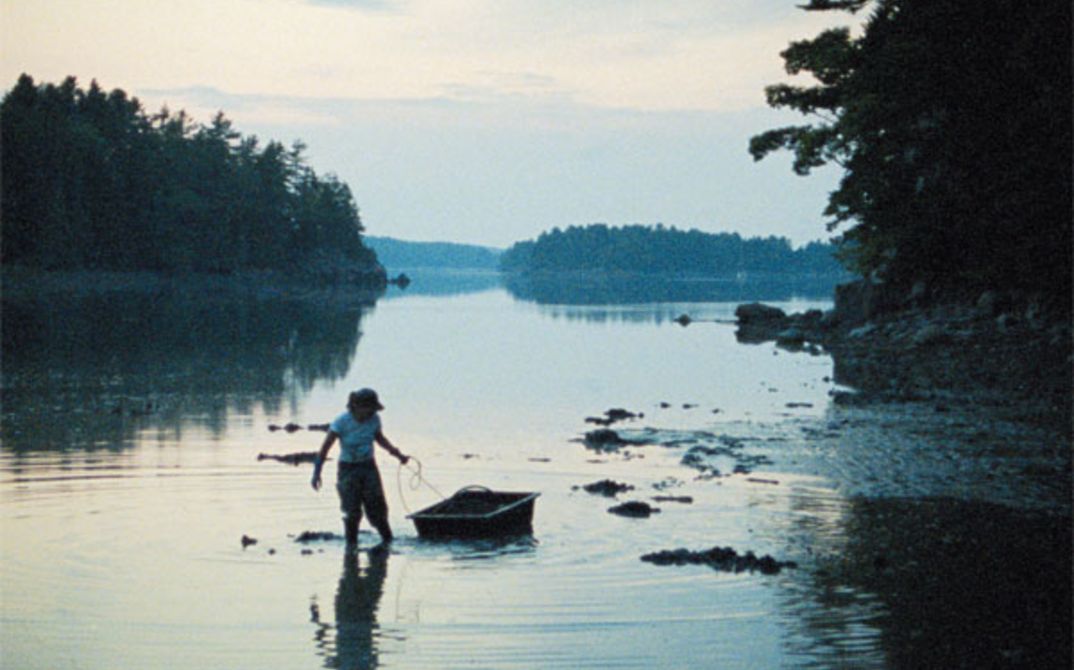Twice a day the female clam digger drags the heavy sled she uses for her work onto the mudflats. Once when the sun lights up the landscape at dawn and a second time when it renders it in glowing colors at sunset. She spends 45 minutes making her way from the shore into the vastness left behind by the low tide, and then another 45 making her way back to the shore – 45 minutes during which the flat image of the screen expands into the depth of space. She wades slowly through the water, bending over every couple of meters to bury her gloved hands deep in the mud. The sucking noise this makes has something intensely corporal about it in comparison with the distant twittering of birds and the occasional sound of a ship's horn echoing through the mist. Before the clam digger brings her haul on to the shore she carefully removes all the mud from her sled. Double Tide, Sharon Lockhart's fourth film about work (after Nō, Lunch Break and Exit), introduces us to a form of labor most of us are as little aware of as we are of the fact that there are only very few days on which low tide occurs twice during daylight hours in Maine. The depiction of a physically demanding job bonds strangely with the poetic images of the landscape, like two magnets that attract and repel each other at the same time.
Stefanie Schulte Strathaus
Production: Lockhart Studio, Los Angeles
Camera: Richard Rutkowski
Format: HDCam (filmed on 16mm), color
Running time: 99 min.
Photo: Courtesy neugerriemschneider, Berlin
